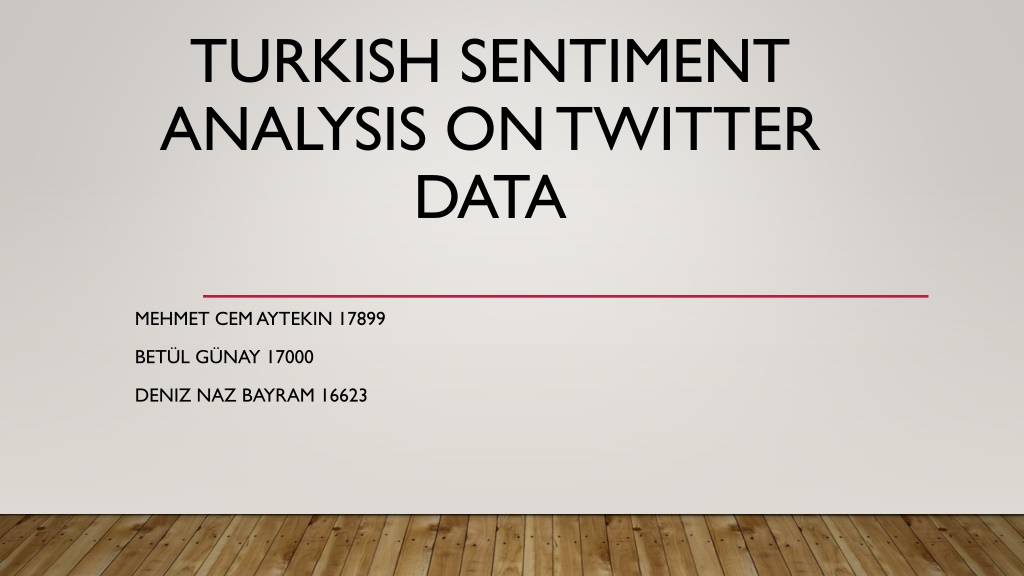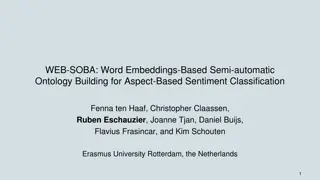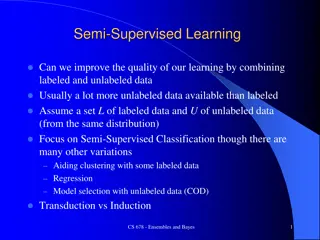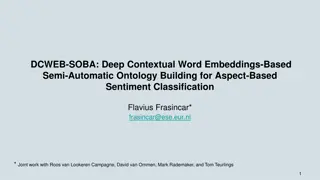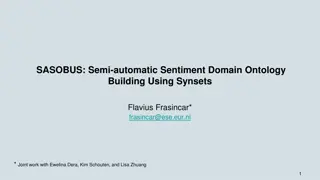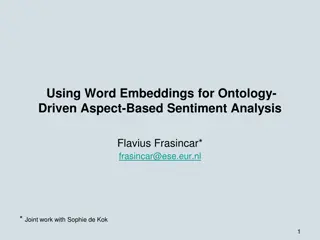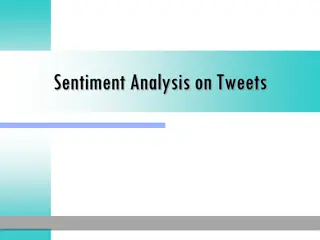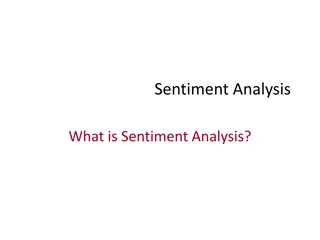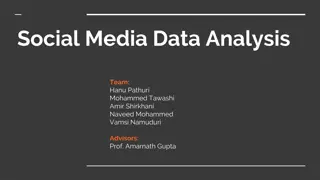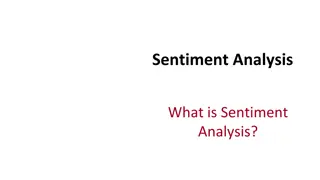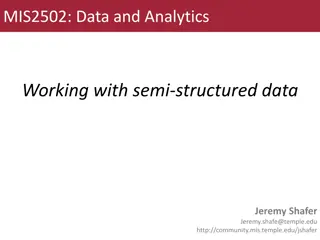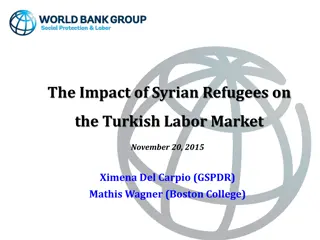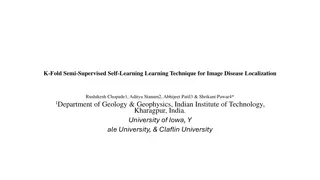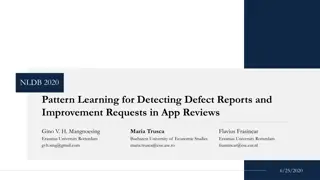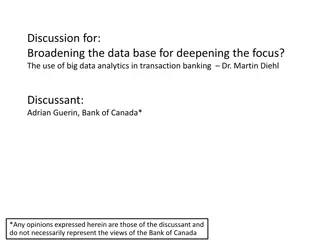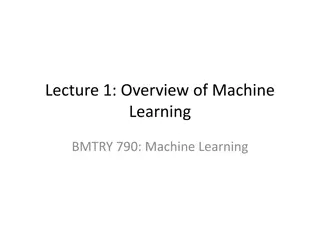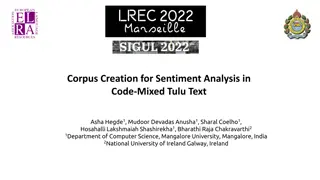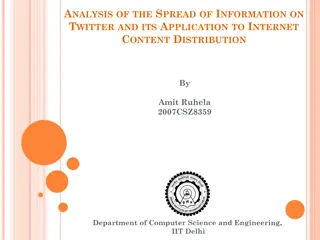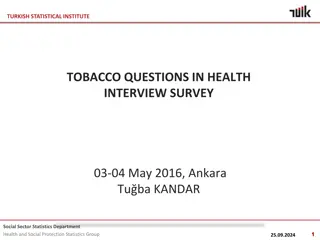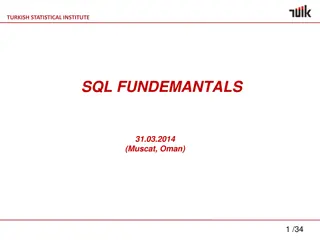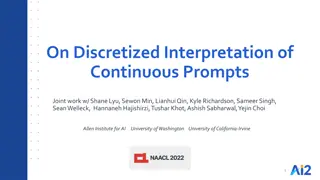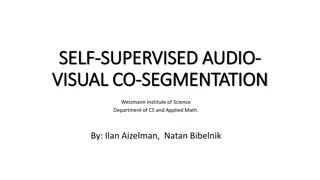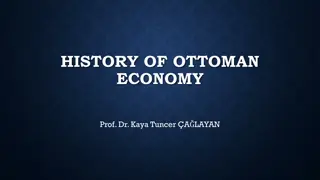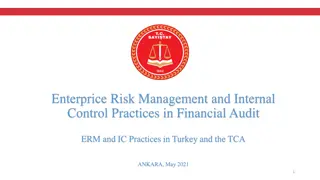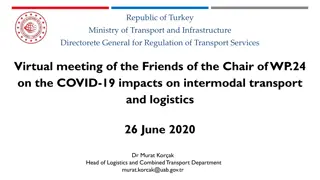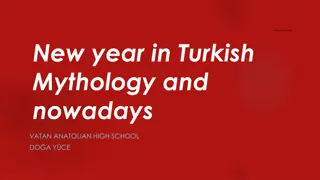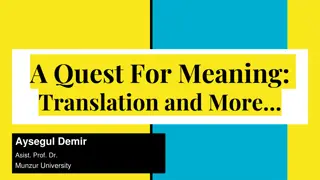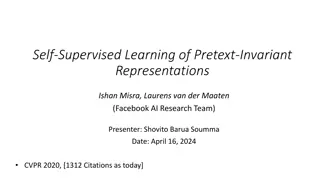Implementing Turkish Sentiment Analysis on Twitter Data Using Semi-Supervised Learning
This project involved gathering a substantial amount of Twitter data for sentiment analysis, including 1717 negative and 687 positive tweets. The data labeling process was initially manual but later automated using a semi-supervised learning technique. A Naive Bayes Classifier was trained using a Bag of Words approach with a vocabulary of 2200 common words. Each word in the vocabulary served as a boolean feature, and the most informative features were identified. The tweets were classified as positive or negative based on their regression values, with positive tweets having values greater than or equal to 0. The entire process aimed at efficiently analyzing sentiments in Turkish tweets.
Uploaded on Sep 28, 2024 | 0 Views
Download Presentation

Please find below an Image/Link to download the presentation.
The content on the website is provided AS IS for your information and personal use only. It may not be sold, licensed, or shared on other websites without obtaining consent from the author. Download presentation by click this link. If you encounter any issues during the download, it is possible that the publisher has removed the file from their server.
E N D
Presentation Transcript
TURKISH SENTIMENT ANALYSIS ON TWITTER DATA MEHMET CEMAYTEKIN 17899 BET L G NAY 17000 DENIZ NAZ BAYRAM 16623
GATHERING LARGEAMOUNT OF DATA: We made modifications on an existing project to automatize the tweet collecting process. We gathered 1717 negative sentimental data and 687 positive sentimental data at the end. Total of 2404 training tweets.
LABELING LARGE AMOUNT OF DATA First we labelled them manually and then we automatized the process as follows : For each tweet we calculated the probability of it being positive or negative based on the previous manually labelled data and if this probability is higher than a certain threshold, we made the program label the data as positive or negative automatically. This approach can be an example of semi-supervised learning technique.
TRAINING THE CLASSIFIER Bag of Words approach. Constructing Vocabulary : most common 2200 words : [('icin', 349), ('tesekkurler', 276), ('cok', 241), ('kredi', 200), ('musteri', 199) 'destek', 174), ('yok', 172), ('kart', 167), ('banka', 151), ('neden', 110), ('iyi', 102), ('daha', 97), ('bana', 97), Naive Bayes Classifier to train the data with the corresponding featuresets.
CONSTRUCTING FEATURE SET Each word in the vocabulary is a feature. Total number of features: 2200. Each feature is boolean, meaning if that word from the vocabulary occurs corresponding feature is set True else set False. For each tweet we look at 2200 features (words).
CLASSIFICATION In order to, consider this project as classification problem, we converted the regression values of tweets to labels which are positive and negative . Tweets with regression values greater than or equal to 0 are labelled as positive and others labelled as negative. We applied the same procedure to the both given training and test data.
ACCURACY WHEN CLASSIFIER TRAINED BY OUR DATA AND SAW THE GIVEN DATA
WHEN CLASSIFIER TRAINED WITH THE GIVEN TRAINING DATA AND SAW THE GIVEN TEST DATA
WHY IS IT THE CASE ? Given training data consisted of 459 negative and and 298 positive tweets. So the classifier only trained with 757 tweets. However in the training set we constructed, it had trained with 2404 tweets. More training data more accuracy.
SOME CODE SNIPPETS FROM OUR PROJECT Note that we have only used Python and its NLTK library in the project
